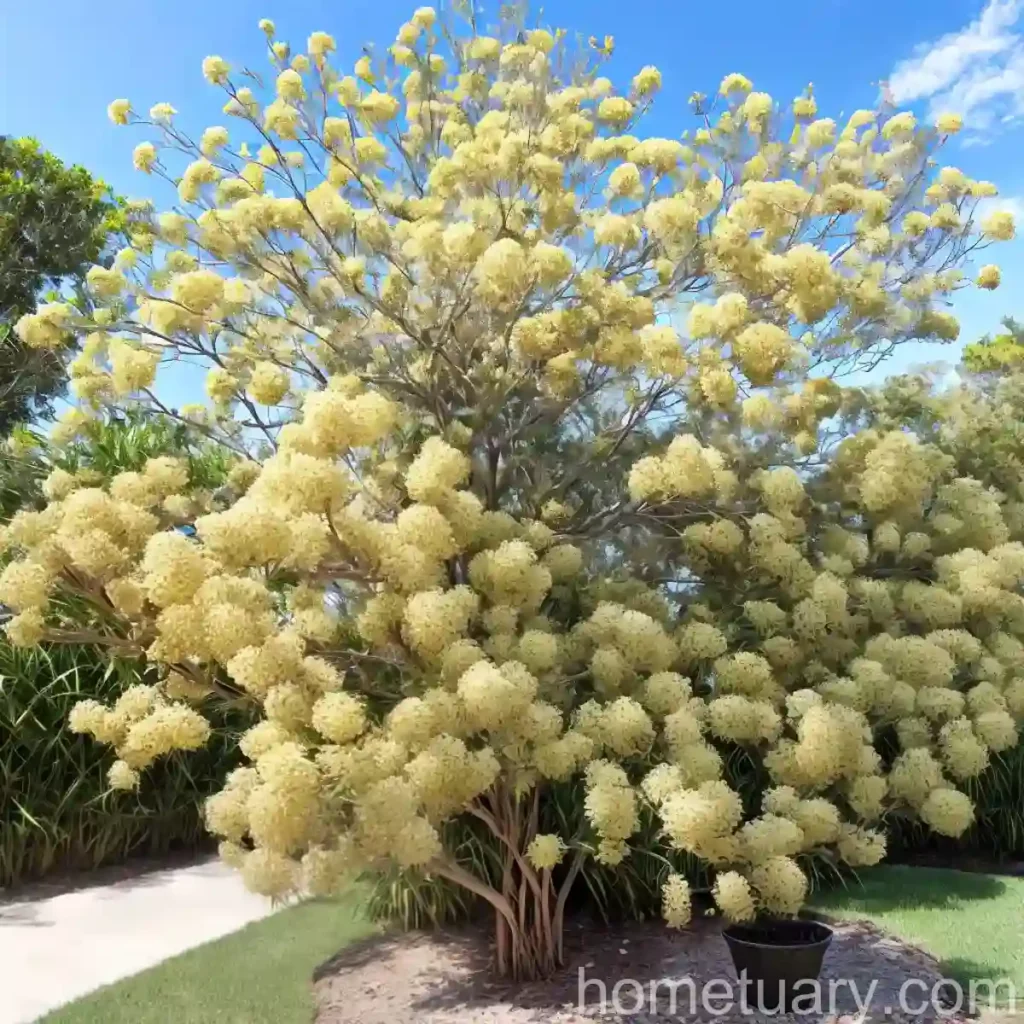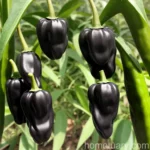All About Black Wattle (Callicoma serratifolia)
Black wattle (Callicoma serratifolia) is a stunning evergreen tree, native to the subtropical rainforests of eastern Australia. With its beautiful foliage and delicate flowers, this plant has gained popularity not only for its ornamental value but also for its various uses and ecological significance. In this comprehensive guide, we will delve into the characteristics, culture, uses, care, and interesting facts about the black wattle, providing valuable insights for both enthusiasts and professionals.
Callicoma serratifolia Characteristics
Callicoma serratifolia, commonly known as black wattle, is a member of the family Cunoniaceae. This tree typically grows to a height of 8-15 meters, forming an attractive, dense canopy with glossy, serrated leaves. The plant features clusters of small, white flowers that bloom from late winter to early spring, adding a touch of elegance to its appearance. The branches of the black wattle develop a smooth, greyish-brown bark with a slightly rough texture, contributing to its visual appeal and distinct characteristics.
Key Takeaways – Black Wattle (Callicoma serratifolia)
- Family: Cunoniaceae
- Height: 8-15 meters
- Foliage: Glossy, serrated leaves
- Flowers: Small, white clusters
- Bark: Smooth, greyish-brown
Black Wattle Tree Uses
The black wattle tree holds significant value due to its diverse range of uses, making it a versatile addition to both natural landscapes and commercial applications. Some of the key uses of Callicoma serratifolia include:
- Ornamental Purposes: Black wattle is often planted for its aesthetic appeal, adding a touch of natural beauty to gardens, parks, and urban landscapes.
- Timber Production: The wood of the black wattle is valued for its strength, durability, and attractive grain, making it suitable for various woodworking applications.
- Ecological Importance: As a native species, black wattle plays a crucial role in maintaining biodiversity and supporting local ecosystems.
- Medicinal Uses: Traditional medicinal practices recognize certain properties of the black wattle for therapeutic purposes.
- Agroforestry: Black wattle is utilized in agroforestry systems for its ability to enhance soil fertility and provide additional economic benefits to farmers.
Growing Black Wattle Plant
When cultivating black wattle, understanding its cultural requirements is essential for ensuring optimal growth and development. Here’s a comprehensive look at the factors to consider when growing the black wattle tree.
Culture
- Climate: Black wattle thrives in subtropical and warm temperate climates, preferring moderately humid conditions.
- Hardiness Zones: The plant is well-suited to zones 9-11, demonstrating good adaptability to a range of environmental conditions.
- Soil pH: The black wattle prefers slightly acidic to neutral soil, with a pH range of 5.5-7.5.
- Moisture: Although the tree can tolerate short periods of drought, it generally prefers consistently moist soil.
Uses
1. Ornamental Purposes
Black wattle is a popular choice for ornamental planting due to its lush foliage and delicate white flowers, adding beauty to gardens, parks, and other green spaces.
2. Timber Production
The wood of the black wattle is prized for its strength and durability, making it suitable for a variety of woodworking projects such as furniture, joinery, and crafts.
3. Ecological Importance
As a native species, black wattle contributes to the ecological balance of its natural habitat, supporting wildlife and various plant communities.
4. Medicinal Uses
Certain parts of the black wattle have been traditionally used for their medicinal properties, particularly in indigenous healing practices.
5. Agroforestry
In agroforestry systems, black wattle is utilized to improve soil fertility, provide shade for crops, and offer additional economic benefits to farmers.
Black Wattle Tree Care
To ensure the health and vitality of black wattle, proper care and maintenance practices are essential. Here are key points to consider when caring for the black wattle tree.
Water
- Irrigation: Newly planted black wattle trees should be watered regularly until they become established. Once established, the tree generally demonstrates good tolerance to dry conditions.
Sunlight
- Light Requirements: Black wattle thrives in full sun to partial shade, benefiting from ample sunlight for vigorous growth and flowering.
Fertilizer
- Nutrient Needs: A balanced fertilizer can be applied during the growing season to support healthy growth and development, particularly for newly planted specimens.
Soil
- Soil Type: Black wattle prefers well-draining, loamy soil with good fertility. It can tolerate a range of soil types, including sandy and clay soils.
Pruning
Pruning black wattle tree is generally minimal, focusing on the removal of dead or damaged branches and shaping the canopy as desired. Pruning should be carried out during the dormant season to minimize stress on the tree and promote vigorous growth in the following season.
Propagation
Black wattle can be propagated through seeds and cuttings. Seeds should be collected from mature pods and sown in a well-prepared seedbed. Cuttings can be taken from semi-hardwood or hardwood growth and treated with rooting hormones to enhance root development.
Container Popularity
As an ornamental tree, black wattle is commonly planted in containers, allowing for easy placement in various outdoor and indoor settings. When grown in containers, attention should be given to adequate drainage, regular watering, and occasional repotting as needed.
Common Diseases
Like many plants, black wattle is susceptible to certain diseases that can affect its overall health and vigor. Understanding these diseases and their management is crucial for maintaining the well-being of the black wattle tree.
Disease Diagnosis
Some common diseases affecting black wattle include:
- Root Rot: Caused by various soil-borne pathogens, root rot can lead to wilting, yellowing foliage, and overall decline in the tree’s health.
- Powdery Mildew: This fungal disease can cause a powdery white coating on the foliage, affecting photosynthesis and weakening the plant.
- Leaf Spot: Several fungal and bacterial pathogens can cause leaf spot, resulting in discolored, spotted foliage and potential defoliation.
Implementing proper cultural practices, such as providing good air circulation, avoiding overhead watering, and regular sanitation, can help manage and prevent these diseases effectively.
Common Pests
Black wattle may also be susceptible to certain insect pests, potentially causing damage to the foliage, stems, or overall health of the tree. Common pests of black wattle include:
- Aphids: These small, sap-sucking insects can cause distorted growth and weaken the tree if present in large numbers.
- Scale Insects: Scale insects can infest the branches and foliage, leading to yellowing, wilting, and overall decline in the tree’s health.
- Caterpillars: Certain caterpillar species may feed on the foliage of black wattle, causing defoliation and reducing the tree’s vigor.
Implementing integrated pest management strategies, including regular monitoring, mechanical control, and selective use of insecticidal treatments, can effectively manage pest populations and minimize their impact on the tree.
Botanist’s Tips
- When planting black wattle, ensure proper spacing between trees to accommodate their mature size and canopy spread.
- Regularly monitor the tree for signs of stress, disease, or pest infestations, addressing any issues promptly to prevent escalation.
- Incorporate black wattle into diverse landscapes to maximize its ornamental and ecological value, considering its role in supporting local biodiversity.
Fun Facts
- The genus name “Callicoma” is derived from the Greek words “kallos” and “koma,” meaning beautiful foliage, which aptly describes the plant’s aesthetic appeal.
- The delicate white flowers of the black wattle tree attract various pollinators, contributing to the overall biodiversity of its habitat.
- Black wattle wood is known for its attractive grain and color, making it a sought-after material for woodworking and artisanal crafts.
Links to External Resources
For additional information on black wattle (Callicoma serratifolia), including detailed cultivation guides, species profiles, and conservation efforts, please refer to the following external resources:
- Australian National Botanic Gardens – Callicoma serratifolia
- PlantNet – The Plant Information Network System of New South Wales
In conclusion, black wattle (Callicoma serratifolia) stands as a valuable tree species with numerous attributes, ranging from its ornamental beauty to its ecological significance and commercial uses. Understanding its characteristics, cultural requirements, and management practices is essential for appreciating and harnessing the potential of this remarkable plant. As we continue to explore the diverse and fascinating world of plants, the black wattle tree serves as a compelling example of nature’s versatility and intrinsic value.















